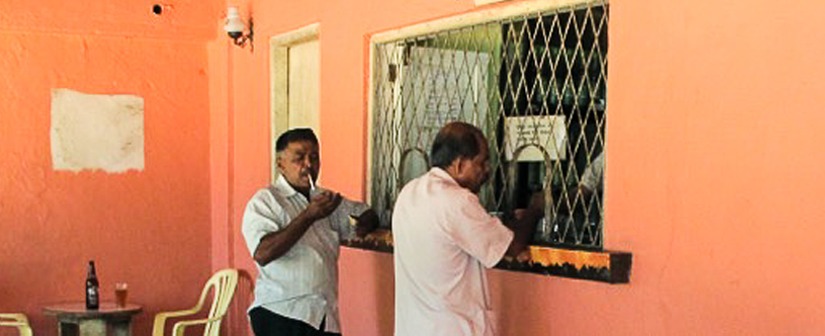The significance of this photo is to understand where I was. Not safely on a hotel balcony but perched somewhat precariously on a narrow ledge atop a tower 125 feet tall. I got there through sheer madness in wanting to see if I could do it.

We had stopped for a G&G (gin and ginger beer) at the drinks dispensary attached to the side of the un-modernised Kadugannawa Rest House up a narrow lane off the main A1 road between Colombo and Kandy. It is close to Dawson’s Tower, that slender lighthouse-like projection into the blue sky built in 1832.

I saw a man gnawing at a cob of sweet corn sitting at the tower’s base and, on a hunch, drained my gin and walked over to him. Yes, he said, he was the tower’s caretaker and, yes, he had the key to the padlock and, yes, he would let me climb the tower.
Naively I thought he would climb too, but he didn’t. He lent me a torch, opened the heavy wooden door and I was launched on a climb of 112 wooden steps, each less than two feet wide, supported by a tall central column and the tower’s wall. By the time I reached the top, I was practically crawling but posed triumphantly, if a little shakily, for the photograph.

Going down was tougher as it meant clinging to the central pole and hobbling down one step at a time. I could still feel the pain in my leg muscles two days later.
A plaque at the base records that his friends and admirers erected this wonderful tribute to Captain W F Dawson “whose science and skill planned and executed this road and other works of public utility.”

Although the Tower was named after him, Captain Dawson didn’t build it – his admirers did in 1832 as a tribute to his work in planning and building the road from Colombo to Kandy bridging the Kadugannawa Pass, an extraordinary engineering feat in the 1820s. William Francis Dawson was British, born in Newmarket, who arrived in Colombo in 1819, seconded from the Royal Engineers. Acting first as Private Secretary to the pioneering Governor, Sir Edward Barnes, he was soon involved in Barnes’s massive programme to give Ceylon “roads, roads and more roads.”
He died in Kandy on 28 March 1829 of dysentery before the road was completed and was buried in St Peter’s Church, Colombo.
Guru’s Tips
This is not an official “tourist site” so you need to be aware of potential danger. You need a head for heights and a strong heart. Wear proper (slip resistant) shoes and bring your own torch (a head torch is best). Don’t climb alone.
There’s no official rate and the caretaker is a volunteer who sweeps and cleans the steps occasionally but watch out for loose ones. Don’t expect a receipt for whatever payment you make (Rs100 per person?) There is a phone number at the entrance gate so you can call him if he’s not around.
Nearest railway station: Kadugannawa; by road about 100km from Colombo and 17km from Kandy.




